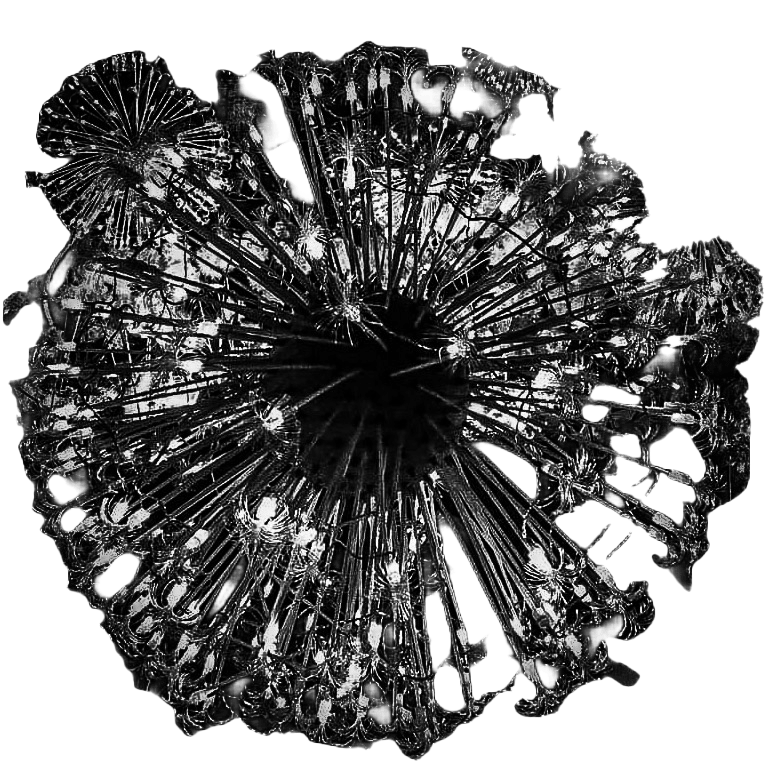
This page contains bibliographies of various critical sources relevant to the study of Asian Gothic and Asian Horror. It reflects my ongoing and past research interests and is not meant to be definitive but rather a work in progress. It is also currently incomplete. Over time, I hope this will evolve into a larger database of texts that can be useful to others working in the field.
Asian Gothic / Asian Horror
- Anno, Hideaki, and Tōhō Kabushiki Kaisha, eds. 2016. Ji Āto Obu Shin Gojira: Art of Shin Godzilla. Shohan. Tokyo: Kabushiki Kaisha Karā.
- Balmain, Colette. 2008. Introduction to Japanese Horror Film. Edinburgh: Edinburgh University Press.
- Barr, Jason. 2016. The Kaiju Film: A Critical Study of Cinema’s Biggest Monsters. Jefferson: McFarland.
- Bettinson, Gary, and Daniel Martin. 2019. Hong Kong Horror Cinema. Edinburgh: Edinburgh University Press.
- Bivens, Jameson. 2020. “Shin Gojira: Return of the Angry God.” Scientia et Humanitas 10 (July): 69–82.
- Brothers, Peter H. 2013. Mushroom Clouds and Mushroom Men: The Fantastic Cinema of Ishiro Honda. Seattle: CreateSpace Books.
- Brougher, Kerry. 2013. “Art and Nuclear Culture.” Bulletin of the Atomic Scientists 69 (6): 11–18. https://doi.org/10.1177/0096340213508697.
- Chiang, Sing-chen Lydia, and Songling Pu. 2005. Collecting the Self: Body and Identity in Strange Tale Collections of Late Imperial China. Leiden; Boston: Brill.
- Choi, Jinhee, and Mitsuyo Wada-Marciano, eds. 2009. Horror to the Extreme: Changing Boundaries in Asian Cinema. Hong Kong; London: Hong Kong University Press.
- Chung, Mun-Young. 2017. “The Humanity of the Zombie: A Case Study of a Korean Zombie Comic.” The Comics Grid: Journal of Comics Scholarship 7 (0): 6. https://doi.org/10.16995/cg.81.
- Crandol, Michael. 2021. Ghost in the Well: The Hidden History of Horror Films in Japan. London; New York: Bloomsbury Academic.
- Crandol, Michael E. 2018. “Beauty Is the Beast: Suzuki Sumiko and Prewar Japanese Horror Cinema.” Journal of Japanese and Korean Cinema 10 (1): 16–31. https://doi.org/10.1080/17564905.2018.1437660.
- Foster, Michael Dylan, and Kijin Shinonome. 2015. The Book of Yokai: Mysterious Creatures of Japanese Folklore. Oakland: University of California Press.
- Hunter, I. Q. 2000. “The Legend of the 7 Golden Vampires.” Postcolonial Studies 3 (1): 81–87. https://doi.org/10.1080/13688790050001381.
- Ikeda, Yoshiko. 2011. “Godzilla and the Japanese after World War II: From a Scapegoat of the Americans to a Saviour of the Japanese.” Acta Orientalia Vilnensia 12 (1): 43–62. https://doi.org/10.15388/AOV.2011.0.1096.
- Kazuhiko, Komatsu. 2018. An Introduction to Yōkai Culture: Monsters, Ghosts, and Outsiders in Japanese History. Translated by Hiroko Yoda and Matt Alt. Tokyo: Japan Publishing Industry Foundation for Culture (JPIC).
- Khair, Tabish. 2009. The Gothic, Postcolonialism and Otherness: Ghosts from Elsewhere. Houndmills, Basingstoke, Hampshire; New York: Palgrave Macmillan.
- Kim, Se Young. 2021. “‘If I Catch You, I’ll Kill You’: The Chaser, South Korean Serial Killer Cinema and the Crisis of Sovereignty.” Screen 62 (1): 20–36. https://doi.org/10.1093/screen/hjab005.
- Lee, Hyunji. 2018. “A ‘Real’ Fantasy: Hybridity, Korean Drama, and Pop Cosmopolitans.” Media, Culture & Society 40 (3): 365–80. https://doi.org/10.1177/0163443717718926.
- Lee, Sung-Ae. 2019. “Supernatural Serials as Social Critique in Recent South Korean Television.” Series – International Journal of TV Serial Narratives 5 (December): 59-70. https://doi.org/10.6092/ISSN.2421-454X/9158.
- Lim, Bliss Cua. 2009. Translating Time Cinema, the Fantastic, and Temporal Critique. Durham and London: Duke University Press.
- Marchetti, Gina, and Tan See Kam, eds. 2006. Hong Kong Film, Hollywood, and the New Global Cinema: No Film Is an Island. Routledge Media, Culture, and Social Change in Asia 6. Abingdon; New York: Routledge.
- Mihic, Tamaki. 2020. Re-Imagining Japan after Fukushima. ANU Press. https://www.jstor.org/stable/j.ctv103xdt4.
- Miyao, Daisuke. 2016. “A Ghost Cat, a Star and Two Intertexts: A Historical Analysis of A Cat, Shozo, and Two Women (1956).” Journal of Japanese and Korean Cinema 8 (2): 89–103. https://doi.org/10.1080/17564905.2016.1161289.
- Moskowitz, Marc L. 2022. “Hopping Vampire Zombies: Hong Kong Cinema Brings Chinese Folklore to the Present.” The Journal of Popular Culture 55 (4): 867–85. https://doi.org/10.1111/jpcu.13160.
- Napier, Susan J. 1993. “Panic Sites: The Japanese Imagination of Disaster from Godzilla to Akira.” Journal of Japanese Studies 19 (2): 327–51. https://doi.org/10.2307/132643.
- Ng, Andrew Hock Soon. 2021. “A Typological Inquiry into Asian Undead Beings, or, Why There Are No Vampires in the East.” Preternature: Critical and Historical Studies on the Preternatural 10 (2): 218–48. https://doi.org/10.5325/preternature.10.2.0218.
- Noriega, Chon. 1987. “Godzilla and the Japanese Nightmare: When ‘Them!’ Is U.S.” Cinema Journal 27 (1): 63–77. https://doi.org/10.2307/1225324.
- O’Brien, Daniel. 2003. Spooky Encounters: A Gwailo’s Guide to Hong Kong Horror. Manchester: Headpress.
- Pang, L. 2011. “The State against Ghosts: A Genealogy of China’s Film Censorship Policy.” Screen 52 (4): 461–76. https://doi.org/10.1093/screen/hjr039.
- Peirse, Alison, and Daniel Martin, eds. 2013. Korean Horror Cinema. Edinburgh: Edinburgh University Press.
- Pu, Songling. 2006. Strange Tales from a Chinese Studio. Translated by John Minford. London: Penguin.
- Redesdale, Algernon Bertram Freeman-Mitford. 2005. Tales of Old Japan: Folklore, Fairy Tales, Ghost Stories, and Legends of the Samurai. Mineola: Dover Publications.
- Ryfle, Steve, and Ed Godziszewski. 2017. Ishiro Honda: A Life in Film, from Godzilla to Kurosawa. Middletown: Wesleyan University Press.
- Serper, Zvika. 2005. “Shindō Kaneto’s Films Kuroneko and Onibaba: Traditional and Innovative Manifestations of Demonic Embodiments.” Japan Forum 17 (2): 231–56. https://doi.org/10.1080/09555800500118214.
- Stokes, Lisa Odham, Jean Lukitsh, Michael Hoover, and Tyler Stokes. 2007. Historical Dictionary of Hong Kong Cinema. Lanham: Scarecrow Press.
- Suh, Joohee. n.d. “The Afterlife of Corpses: A Social History of Unburied Dead Bodies in Qing China (1644-1911).” https://doi.org/10.7936/V4PT-9C47.
- Teo, Stephen. 2007. Hong Kong Cinema: The Extra Dimensions. London: British Film Institute.
- Tsutsui, William M., and Michiko Itō, eds. 2006. In Godzilla’s Footsteps: Japanese Pop Culture Icons on the Global Stage. New York: Palgrave Macmillan.
- Wada-Marciano, Mitsuyo. 2008. Nippon Modern: Japanese Cinema of the 1920s and 1930s. Honolulu: University of Hawaiʻi Press.
- Wang, Shengyu. 2022. “Pu Songling’s ‘Shibian’ 尸變 and Vampiric Chases in the Chinese Tradition of Strange Narratives.” T’oung Pao 108 (5–6): 738–77. https://doi.org/10.1163/15685322-10805005.
- Wang, Shengyu, and Paulo Brito, trans. 2022. “Five Late-Ming and Early-Qing Analogues of the Liaozhai Zhiyi Tale ‘Shibian.’” Renditions: A Chinese-English Translation Magazine 98:20–28.
- Wu, Chia-rong. 2021. “Spectralizing the White Terror: Horror, Trauma, and the Ghost-Island Narrative in Detention.” Journal of Chinese Cinemas 15 (1): 73–86. https://doi.org/10.1080/17508061.2021.1926156.
Collections with chapters on Asian Gothic / Asian Horror
- Bacon, Simon, ed. 2022. The Undead in the 21st Century: A Companion. Oxford; New York: Peter Lang.
- Browning, John Edgar, and Caroline Joan Picart, eds. 2009. Draculas, Vampires, and Other Undead Forms: Essays on Gender, Race, and Culture. Lanham: Scarecrow Press.
- Millette, Holly-Gale, and Ruth Heholt, eds. 2020. The New Urban Gothic: Global Gothic in the Age of the Anthropocene. Cham: Palgrave Macmillan.
- Punter, David, ed. 2012. A New Companion to the Gothic. Malden: Wiley-Blackwell.
- Siddique, Sophia, and Raphael Raphael, eds. 2016. Transnational Horror Cinema: Bodies of Excess and the Global Grotesque. London: Palgrave Macmillan.
Asian contexts
- Chung, Edward Y. J., and Jea Sophia Oh, eds. 2022. Emotions in Korean Philosophy and Religion: Confucian, Comparative, and Contemporary Perspectives. Cham: Palgrave Macmillan.
- Cribb, Robert. 2002. “Unresolved Problems in the Indonesian Killings of 1965–1966.” Asian Survey 42 (4): 550–63. https://doi.org/10.1525/as.2002.42.4.550.
- Crossley, Pamela Kyle. 2010. The Wobbling Pivot, China since 1800: An Interpretive History. Chichester; Malden: Wiley-Blackwell.
- Eickhoff, Martijn, Gerry van Klinken, and Geoffrey Robinson. 2017. “1965 Today: Living with the Indonesian Massacres.” Journal of Genocide Research 19 (4): 449–64. https://doi.org/10.1080/14623528.2017.1393931.
- He, Hilary Hongjin. 2010. “‘One Movie, Two Versions’: Post-1997 Hong Kong Cinema in Mainland China.” Global Media Journal, Australian Edition 4 (2): 1–16.
- Hioe, Brian. 2016. “Shin Godzilla: Specters of Fukushima, Hiroshima, and Article 9.” New Bloom Magazine. September 21, 2016. https://newbloommag.net/2016/09/21/shin-godzilla-review/.
- Ju, Hyejung. 2020. “Korean TV Drama Viewership on Netflix: Transcultural Affection, Romance, and Identities.” Journal of International and Intercultural Communication 13 (1): 32–48. https://doi.org/10.1080/17513057.2019.1606269.
- Kim, Jihoon. 2019. “Korean Popular Cinema and Television in the Twenty-First Century: Parallax Views on National/Transnational Disjunctures.” Journal of Popular Film and Television 47 (1): 2–8. https://doi.org/10.1080/01956051.2019.1562815.
- Kim, Youna, ed. 2013. The Korean Wave: Korean Media Go Global. London; New York: Routledge.
- Kim, Youna, ed. 2022. Soft Power of the Korean Wave: Parasite, BTS and Drama. London; New York: Routledge.
- Leksana, Grace. 2021. “Collaboration in Mass Violence: The Case of the Indonesian Anti-Leftist Mass Killings in 1965–66 in East Java.” Journal of Genocide Research 23 (1): 58–80. https://doi.org/10.1080/14623528.2020.1778612.
- Park, JaeYoon, and Ann-Gee Lee, eds. 2019. The Rise of K-Dramas: Essays on Korean Television and Its Global Consumption. Jefferson: McFarland & Company, Inc., Publishers.
- Shim, David. 2021. “Cinematic Representations of the Gwangju Uprising: Visualising the ‘New’ South Korea in A Taxi Driver.” Asian Studies Review 45 (3): 454–70. https://doi.org/10.1080/10357823.2020.1837071.
- Zurbuchen, Mary S. 2002. “History, Memory, and the ‘1965 Incident’ in Indonesia.” Asian Survey 42 (4): 564–81. https://doi.org/10.1525/as.2002.42.4.564.
Relevant general sources
- Asma, Stephen T. 2011. On Monsters: An Unnatural History of Our Worst Fears. Oxford: Oxford University Press.
- Belau, Linda, and Kimberly Jackson, eds. 2018. Horror Television in the Age of Consumption: Binging on Fear. New York; London: Routledge.
- Briggs, Julia. 2012. “The Ghost Story.” In A New Companion to the Gothic, edited by David Punter, 176–85. Oxford: Wiley-Blackwell.
- Carroll, Noël. 1990. The Philosophy of Horror, or, Paradoxes of the Heart. New York: Routledge.
- Caruth, Cathy, ed. 1995. Trauma: Explorations in Memory. Baltimore: Johns Hopkins University Press.
- Caruth, Cathy. 1996. Unclaimed Experience: Trauma, Narrative, and History. Baltimore: Johns Hopkins University Press.
- Cohen, Jeffrey Jerome, ed. 1996. Monster Theory: Reading Culture. Minneapolis: University of Minnesota Press.
- Davis, Christine S., and Jonathan L. Crane. 2015. “A Dialogue with (Un)Death: Horror Films as a Discursive Attempt to Construct a Relationship with the Dead.” Journal of Loss and Trauma 20 (5): 417–29. https://doi.org/10.1080/15325024.2014.935215.
- Feldman, Michael J. 2015. “Ghost Stories: Transgenerational Trauma and Witnessing in Analyst and Analysand.” Psychoanalytic Dialogues 25 (5): 600–613. https://doi.org/10.1080/10481885.2015.1077050.
- Gaynor, Stella Marie. 2022. Rethinking Horror in the New Economies of Television. Cham: Palgrave Macmillan.
- Gilmore, David D. 2009. Monsters: Evil Beings, Mythical Beasts and All Manner of Imaginary Terrors. Philadelphia; Oxford: University of Pennsylvania Press.
- Gordon, Avery F. 2008. Ghostly Matters: Haunting and the Sociological Imagination. Minneapolis; London: Minnesota University Press.
- Hart, Carina. 2020. “Gothic Folklore and Fairy Tale: Negative Nostalgia.” Gothic Studies 22 (1): 1–13. https://doi.org/10.3366/gothic.2020.0034.
- Jowett, Lorna, and Stacey Abbott. 2013. TV Horror: Investigating the Dark Side of the Small Screen. London; New York: I.B. Tauris.
- Juranovszky, Andrea. 2014. “Trauma Reenactment in the Gothic Loop: A Study on Structures of Circularity in Gothic Fiction.” Inquiries 6 (5): 4.
- Kaika, Maria. 2004. “Interrogating the Geographies of the Familiar: Domesticating Nature and Constructing the Autonomy of the Modern Home.” International Journal of Urban and Regional Research 28 (2): 265–86. https://doi.org/10.1111/j.0309-1317.2004.00519.x.
- Lowenstein, Adam. 2005. Shocking Representation: Historical Trauma, National Cinema, and the Modern Horror Film. New York: Columbia University Press.
- Miller, Cynthia J., and A. Bowdoin Van Riper, eds. 2015. Horrors of War: The Undead on the Battlefield. Lanham: Rowman & Littlefield.
- Miller, William Ian. 1998. The Anatomy of Disgust. Cambridge, MA; London: Harvard University Press.
- Pascuzzi, Francesco, and Sandra Waters, eds. 2020. The Spaces and Places of Horror. Wilmington: Vernon Press.
- Schmidt, Lisa. 2013. “Television: Horror’s ‘Original’ Home.” Horror Studies 4 (2): 159–71. https://doi.org/10.1386/host.4.2.159_1.
- Smith, Dorothy E., and Avery F. Gordon. 1999. “Ghostly Matters: Haunting and the Sociological Imagination.” Contemporary Sociology 28 (1): 120. https://doi.org/10.2307/2653923.
- Sumegi, Angela. 2014. Understanding Death: An Introduction to Ideas of Self and the Afterlife in World Religions. Chichester; Malden: Wiley Blackwell.
- Vinci, Tony M. 2019. Ghost, Android, Animal: Trauma and Literature Beyond the Human. Routledge. https://doi.org/10.4324/9780429291623.
- Weinstock, Jeffrey Andrew, ed. 2020. A Monster Theory Reader. Minneapolis: University of Minnesota Press.
- Wheatley, Helen. 2006. Gothic Television. Manchester: Manchester University Press.
